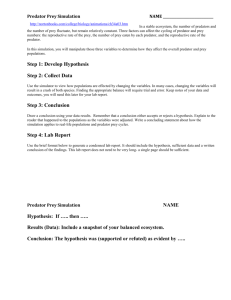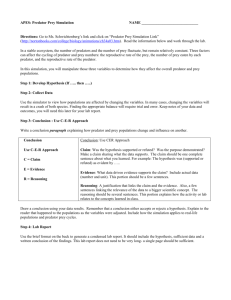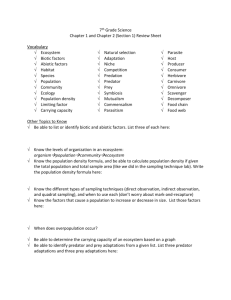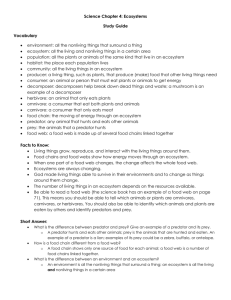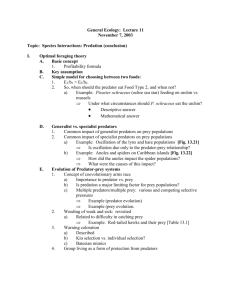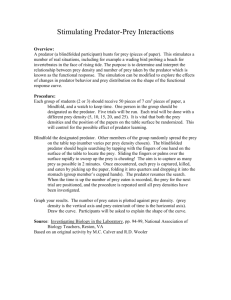Preditor - Prey Simulation
advertisement
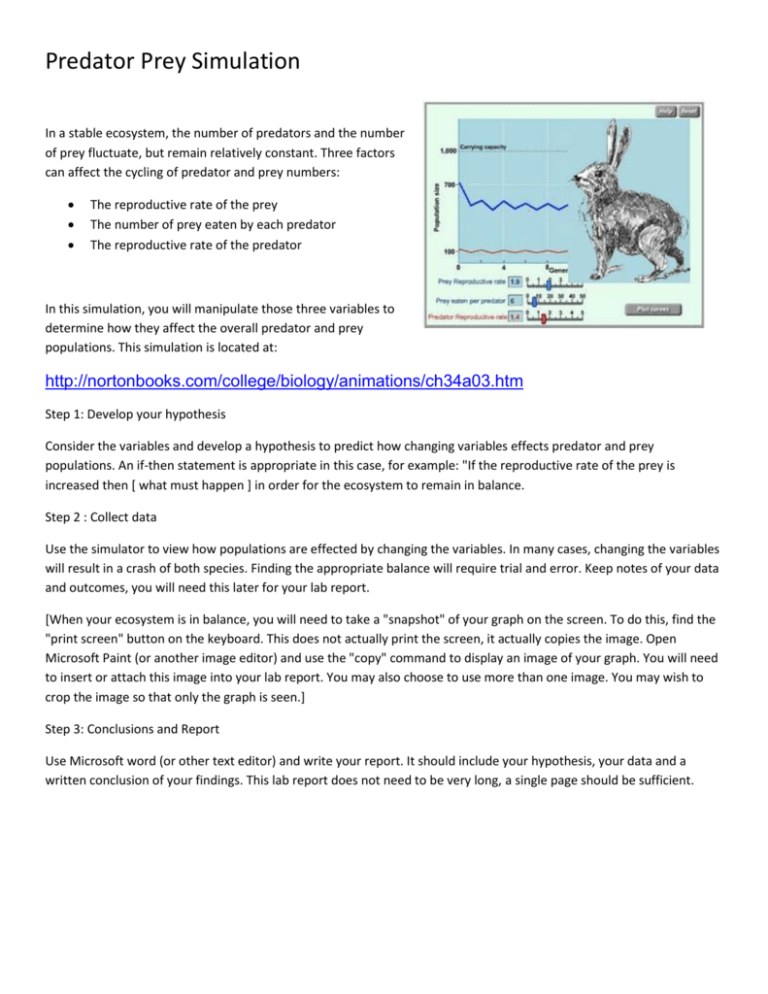
Predator Prey Simulation In a stable ecosystem, the number of predators and the number of prey fluctuate, but remain relatively constant. Three factors can affect the cycling of predator and prey numbers: The reproductive rate of the prey The number of prey eaten by each predator The reproductive rate of the predator In this simulation, you will manipulate those three variables to determine how they affect the overall predator and prey populations. This simulation is located at: http://nortonbooks.com/college/biology/animations/ch34a03.htm Step 1: Develop your hypothesis Consider the variables and develop a hypothesis to predict how changing variables effects predator and prey populations. An if-then statement is appropriate in this case, for example: "If the reproductive rate of the prey is increased then [ what must happen ] in order for the ecosystem to remain in balance. Step 2 : Collect data Use the simulator to view how populations are effected by changing the variables. In many cases, changing the variables will result in a crash of both species. Finding the appropriate balance will require trial and error. Keep notes of your data and outcomes, you will need this later for your lab report. [When your ecosystem is in balance, you will need to take a "snapshot" of your graph on the screen. To do this, find the "print screen" button on the keyboard. This does not actually print the screen, it actually copies the image. Open Microsoft Paint (or another image editor) and use the "copy" command to display an image of your graph. You will need to insert or attach this image into your lab report. You may also choose to use more than one image. You may wish to crop the image so that only the graph is seen.] Step 3: Conclusions and Report Use Microsoft word (or other text editor) and write your report. It should include your hypothesis, your data and a written conclusion of your findings. This lab report does not need to be very long, a single page should be sufficient. Format for Report Title and Name Hypothesis: Write your if-then statement from Step 1. Results (Data): Print a snapshot of your balanced ecosystem from Step 2. Conclusions: * Accept or reject your hypothesis (prediction) * EXPLAIN what happened in the experiment as you adjusted the variables (prey and predator reproductive rates, and the number of prey eaten Write a concluding statement about how the simulation applies to real-life populations and predator prey cycles. Emphasis should be on energy, equilibrium, and feedbacks.
